#IrishCaveBones Day 3 🧵 1/n @RuthFCarden back again (with coffee in hand). A few of you have asked how did the animal bones get into the caves in Ireland? This is a great question but there are no simple answers, rather likely a mixture of different ways.....
2/n We saw how tight some passages are in Castlepook cave yesterday, so how did XXL sized Wooly mammoth bones, like the humerus front leg bone in photo, end up inside, deep underground? 
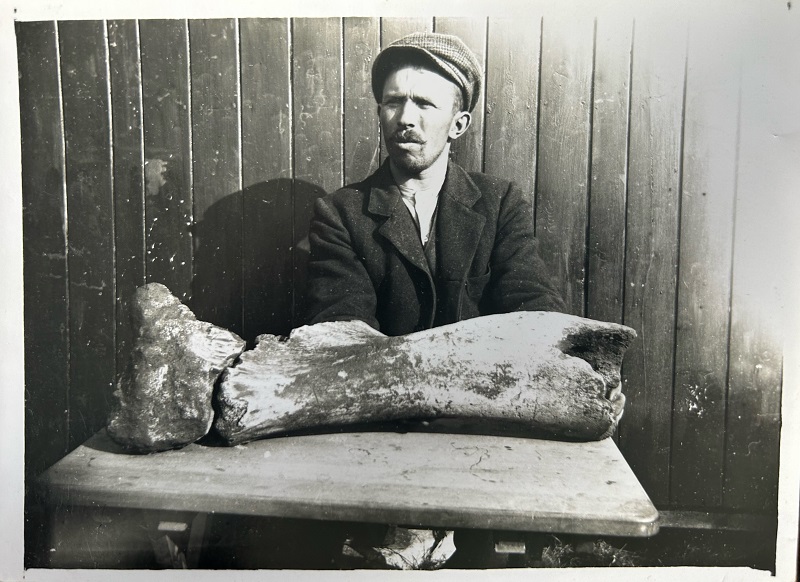
3/n Bone caves, where animal bones have been found in caves, and bone-bearing cracks within/outside of limestone caves, are important sources of fossil animals but at times there is little cave sediment associated with these bones. There is an important relationship between
4/n animals, living or dead, and the cave they are found in. How a cave 'works' or it's birth and continued formation or development is just as important in how animal bones got into caves and stayed there for thousands and thousands of years.
5/n Let's imagine we are an animal on the surface, above ground. And we died of natural causes. Our soft tissues start to decay, our body is exposed to climatic effects - rain, wind, hot sun, drying out - as our muscles and organs start to decay, it leaves our bones exposed to
6/n to all the weather and climatic effects. The cartilage and tendons holding legs together break down and the bones become loose and disarticulate, again less protection covering them and further exposed to weathering and destruction. Plants roots start to seek out bone's
7/n minerals and causes the bones to further degrade. If left alone long enough with no intervention, these bones would eventually, over time and weather effects, crumble into small fragments, and disppear into the soil, exposed to acid soil water.
8/n so time will break down an animal body to bones, and to small fragments and return to earth. However, if for example, the animal body was scavenged by a carnivore species such as a wolf or bear, that body would be pulled apart into different parts and brought elsewhere ...
9/n Elsewhere could be a cave used by the carnivore animal, that uses the cave for shelter or as a lair or for hibernation. The bones would decay but due to the cave's constant temperature and humdity within (not near entrance), it's a protected place - little plant roots,
10/n largely isolated from soil organisms, acid soil water and protected from other scavengers, unless there are more of the same species that scavenged the original body to begin with.
11/n In Ireland, there are several potential ways that animal bones got into the limestone cave systems and there were scavenger animal species (including humans, who act as predators and even prey animals to larger carnivore species). If we take Castlepook cave, Co. Cork as
12/n an example limestone Irish cave - there are many bones found on Ussher's excavations and our own 2022+ throughout the cave, with concentrations in several areas, whilst other bones are found in many other smaller/larger passage ways and chambers. It's a complex system.
13/n A source of bones could come from flooding events, where surface waters enter holes in the ground and carry bones into the cave system. Others could fall into the cave due to collapse of cave ceilings (ground), and either live or dead animals fall in and never get out again.
14/n Some flooding events, if large enough will rework animal bones already in the cave (through various means) and move them elsewhere withing the cave, along with rocks, pebbles, and cave sediment. Think like a washing machine that is a cave - everything gets jumbled around.
15/n Then there are pit falls or water-hole traps on the surface, above a cave system, where there's a partial collapse unbeknownst to the animals usually using the water source above, they stray into deeper water, steep inclines, can't get out, drown and fall into cave below.
16/n That's the usual water-effects that transport large and small bones (bodies) into cave systems, and then these are be further scattered inside the cave through massive flooding events (e.g. glacier melt water). But there are interesting relationships within the animals too
17/n Hyenas are large carnivores with powerful jaws and teeth, and associated muscles, that crunch and eat animal bones. This is a lower jaw from a hyena found in Castlepook cave, Co. Cork. We will talk more of these species and others tomorrow (Day 4), but for now, we need to 
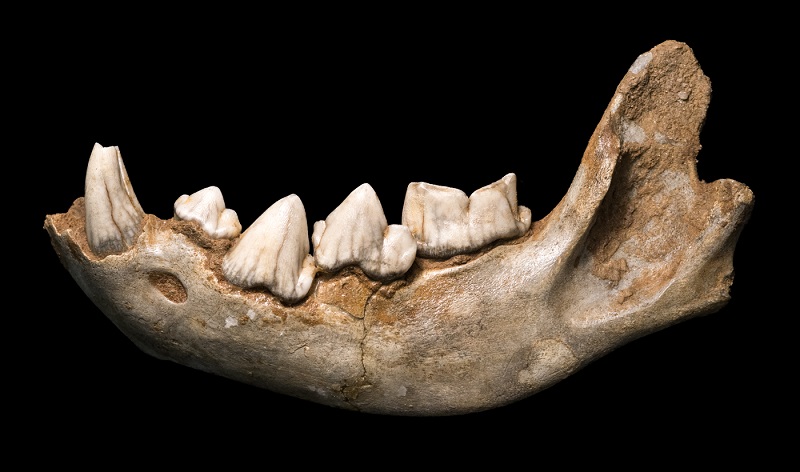
18/n know that hyenas are scavenger animals as well as predators. They have distinctive vocal calls and behaviours with a female dominated socail system, females are larger than males in terms of body sizes. Castlepook cave is the only cave, yet, with hyena bones in Ireland.
19/n Imagine time travelling back to about 35,000 years ago and at night time (they mainly come out to hunt/scavenge at night), you heard these calls in the pitch dark getting nearer and nearer to you .... (close your eyes and just listen....)
20/n Hyenas did take parts of reindeer carcases (and probably hunted young reindeer calves) and crunched their way through the bones, leaving bone fragments scattered near the entrance of their cave lair. We can see evidence of this from tooth pit marks on reindeer bones. 
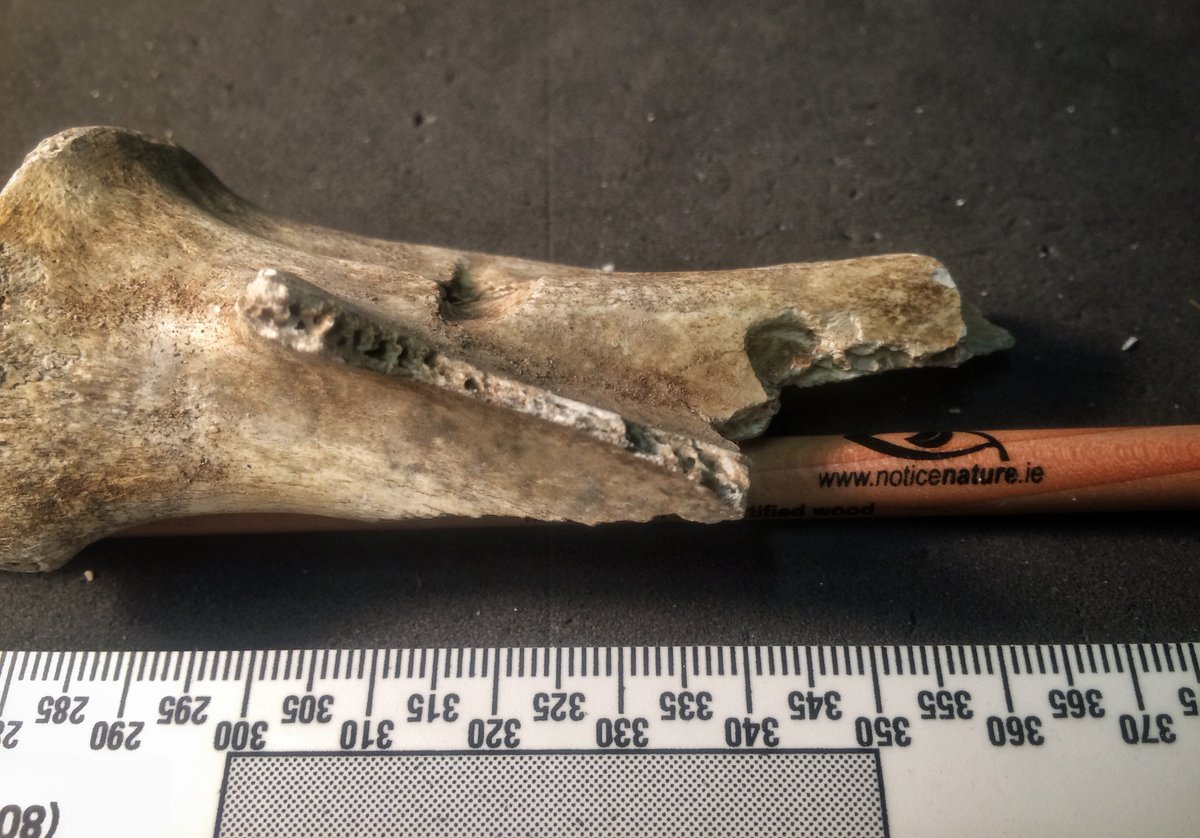
21/n Therefore, these scavenger/predators bring bones and fragments of bones into the cave system. Since hyenas also eat bones, they can pass partially digested bones out with their poop, further into the cave where they would have rested.
22/n Brown bears are known to use caves as places to hibernate over winter in....and we find their bones in Castlepook cave too. These are large bones, and an adult bear died within the cave, and possibly these bones were moved during large flooding events within the cave itself. 



23/n Some animals spend their entire lives in caves, such as some species of amphibians (frogs) and lizards and fish. When they die, their bones reside in the cave systems too. Other animals spend part of their lives in caves and other part outside above ground, like bears.
24/n While some carnivores such as foxes come into caves in search of prey or carrion (dead bodies), chase prey into caves &also importantly in the search of water. Some prey species don't make it out as they get lost, same for foraging carnivores. (More bones to add to the cave)
25/n Predators and prey can also get trapped within a cave, either falling or going into a hole and can't get out or a collapse inside the cave prevents exit. We see recent intrusions of whole rabbit skeletons down the end of small tall pits. Also hares chased in and getting lost
26/n We have found wolf bones in Castlepook & other caves, and evidence of wolf picking up bones of reindeer and other species and gnawing on them. This predator used caves as shelter, eating, water source, & den for pups. (Listen to these new howls 😍)
27/n And another predator/carnivore/scavenger we have to take into account arehumans... humans use caves in large variety of ways through time. They bring their dead into caves as form of ritual burial, bring tools and decorative items in, use for shelter, to butcher animals etc 
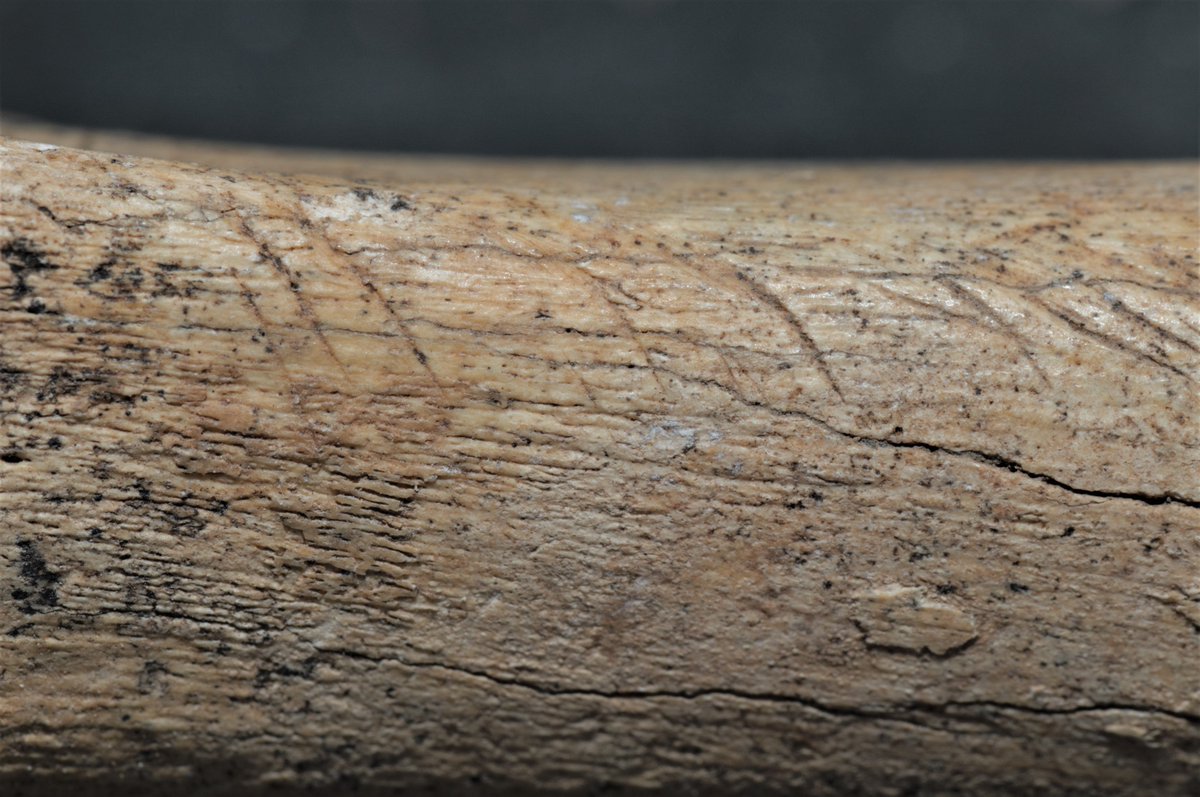
28/n so all in all, many ways of animals bones getting into cave systems and being moved around inside too - action of water, actions of predator/prey animals and animals such as birds and bats also use caves for shelter and roosting.
29/n By looking at the animal bones left in caves and identifying the type of bone and to what animal species it belonged too, and where it is found in the cave system we can look at spatial distribution patterns of the bones in the system and if any accumulations due to reasons
30/n this is a area which I will be looking into and analysing in more detail later this year and into next. But we also have other things going on with bones in the caves - they can be effected by the cave processes and change colours depending if there is any live bacteria
31/n or moulds eating the surfaces of the bones. These white speckled brown/black bones are typical from certain areas of Castlepook cave - the white speckles or dots resulting from moulds eating portions of the bone surface. Makes for interesting looking bones! 

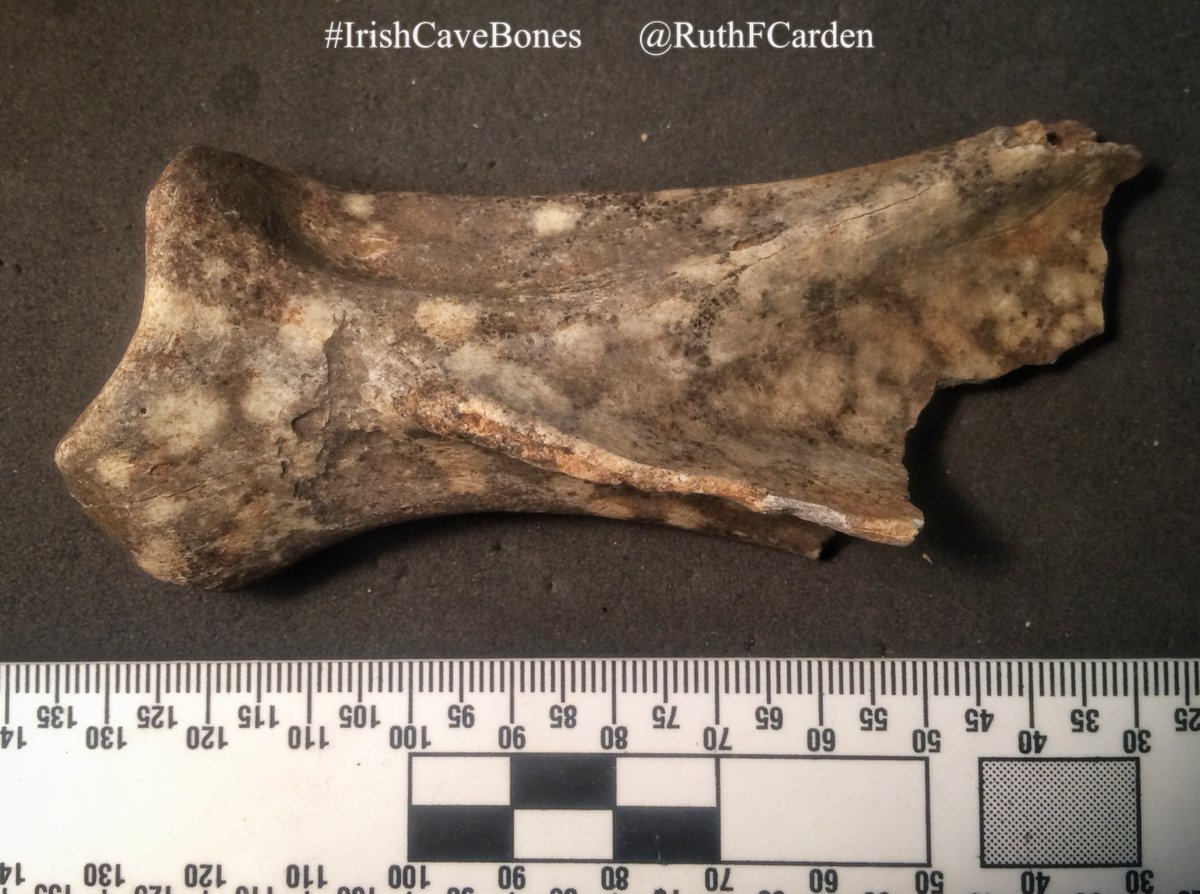
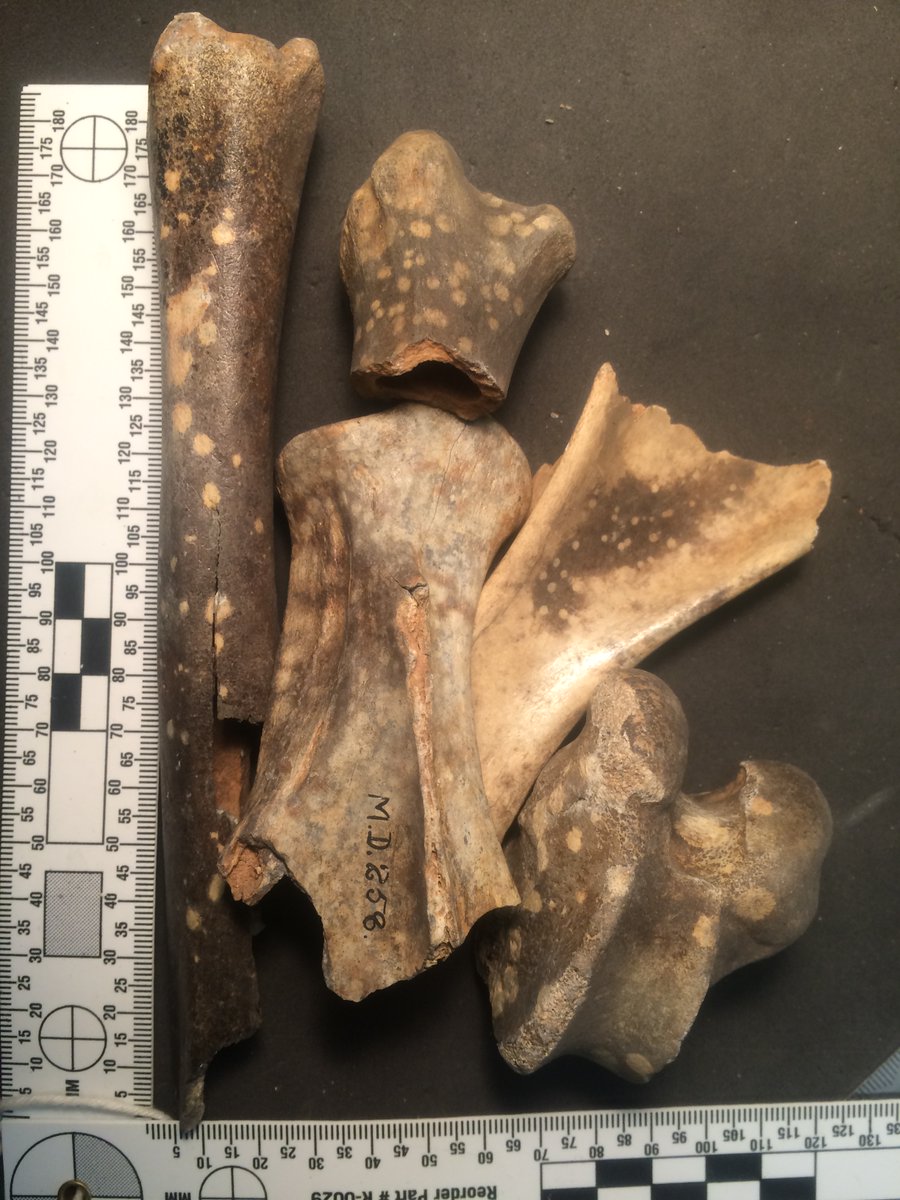
32/n Also rodents get into caves to chew or gnaw on the animal bones, seeking out minerals from the bones themselves. They leave characteristic marks (parallel marks) on the surfaces and along edges. 
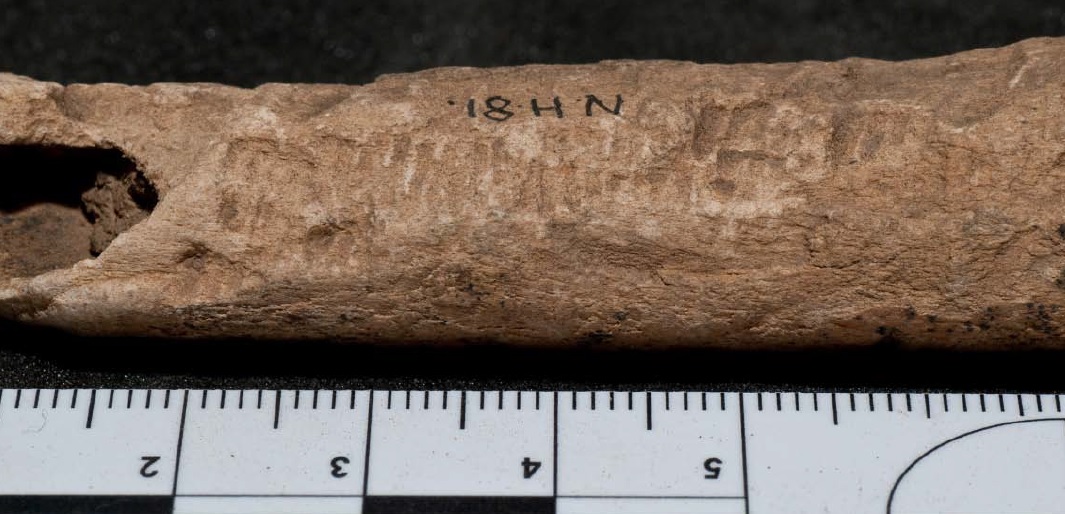
33/n Some bones that end up in caves, might have been severely weathered above ground before entering the system underground and thus generally are poorly preserved, no matter how good the cave environment is. 
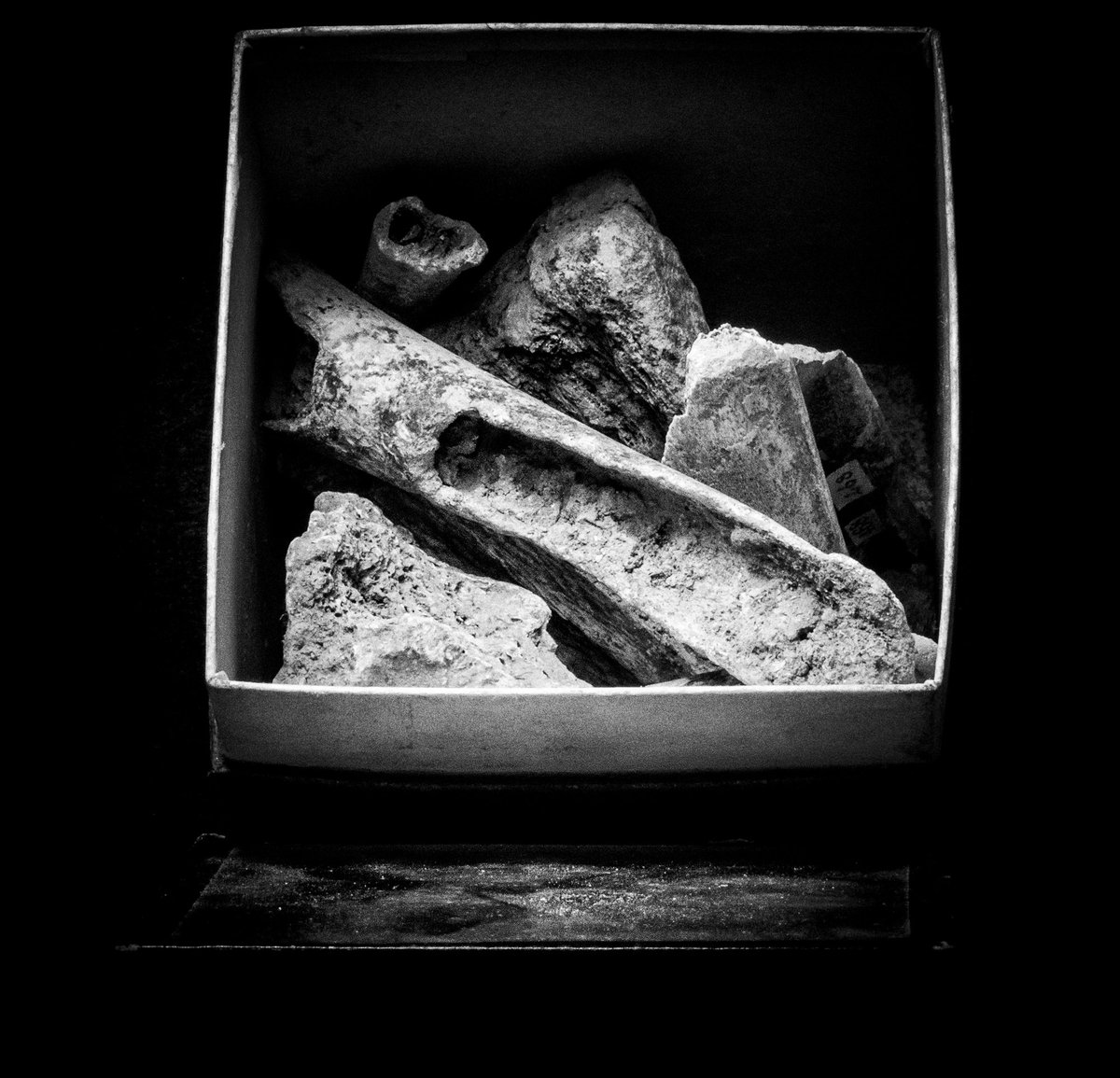
34/n And the ultimate predator against predator, bear-bear or hyena-bear attacking &eating/chewing down on parts of the body. A metapodial bone of a brown bear (foot bone) from Castlepook cave, showing a large canine tooth groove & a refitted piece of splintered bone. 

35/n All in, you can see there are several ways, and likely a mixture of all above, of how bones get inside and are preserved within Irish limestone caves. Interestingly, there are several wolf bones in caves, perhaps preyed on or scavenged by other predators? natural deaths? Or 
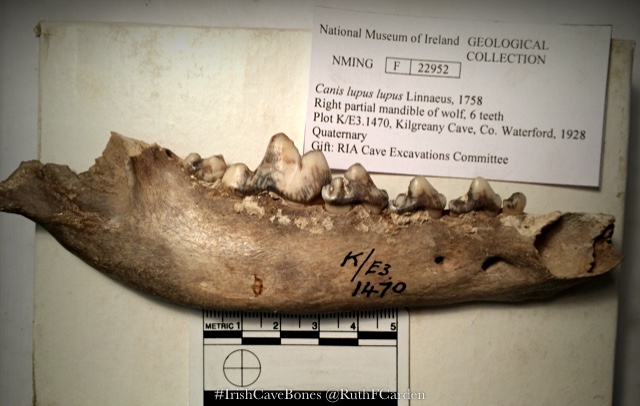
36/n were these wolves injuried and sought the cave our for shelter to heal, but their injuries were fatal? Some questions we can't answer. But over time, these caves were repeatedly used by similar species, and through whatever means, their bones accumulated within the caves
37/ through time, for us to find in the late 1800s, early 1900s and even today. We know these bones are in general remarkably preserved so much so we can extract ancient DNA sequences from them, we can radiocarbon date them and apply other analysis to these bones too, which will
38/38 give up their secrets from their past lives. Tomorrow, Day 4, I get more into the origins of Ireland's modern species set, and into what do we mean by a 'native' species. Lots of time travelling tomorrow and questions. Until then #IrishCaveBones will mingle! 
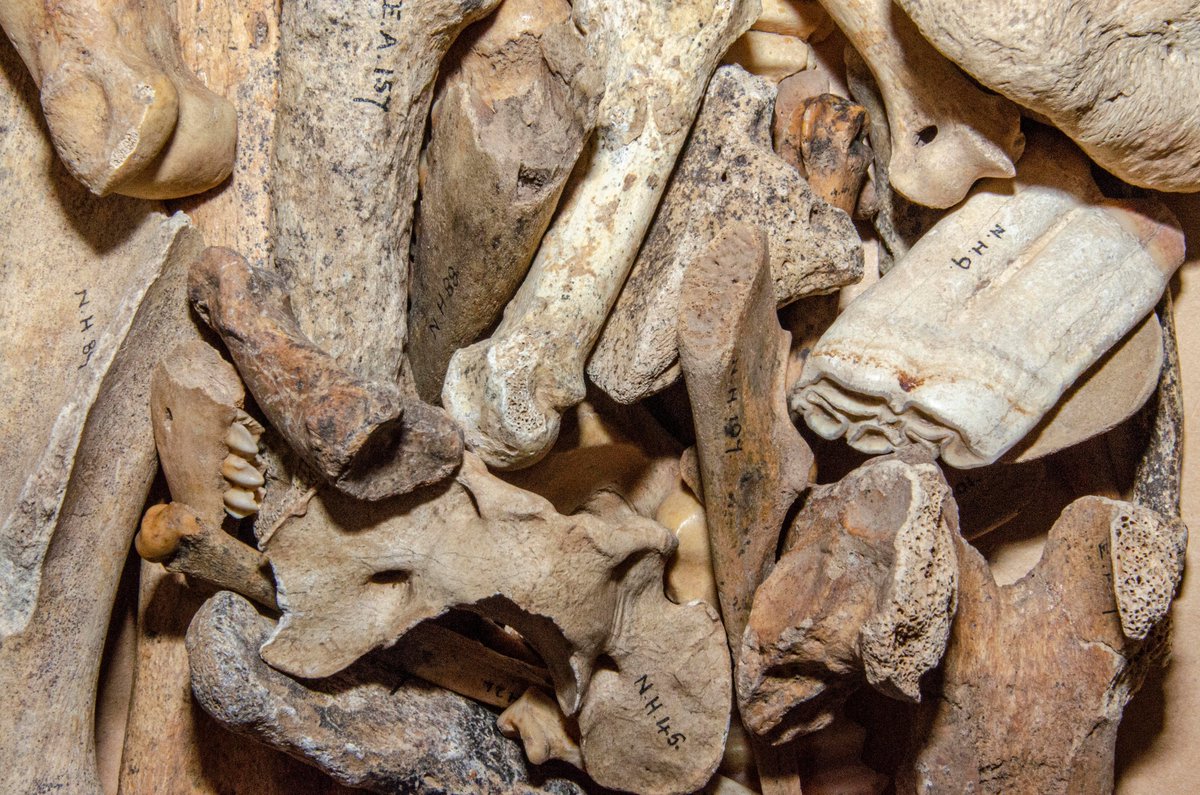
• • •
Missing some Tweet in this thread? You can try to
force a refresh

 Read on Twitter
Read on Twitter












